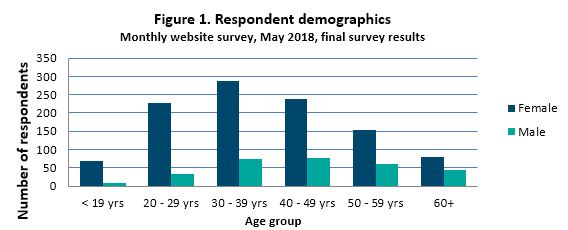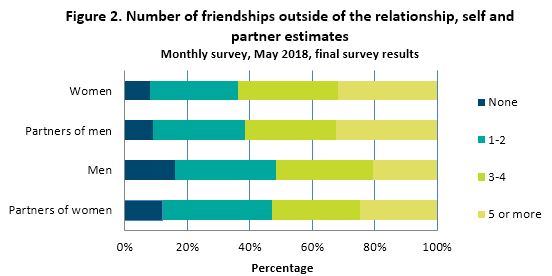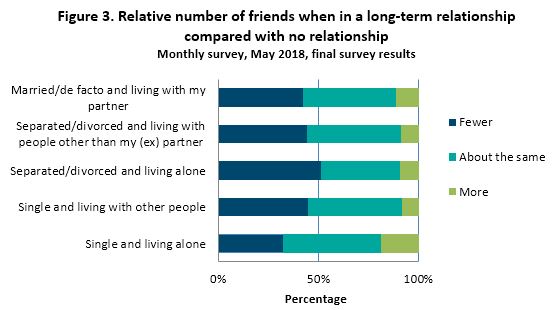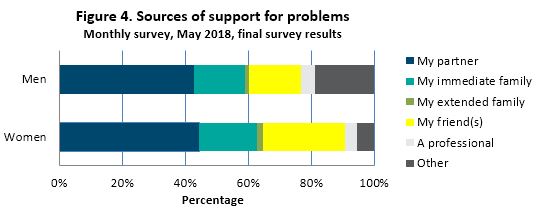Introduction
Would you like to be notified when a new survey report is released? Sign up here
Most individuals can identify issues or problems they would only discuss with a small group of people that are very close to them. A person’s closest ties are often referred to as a core discussion group or network, usually comprising a small, intimate and significant number of friends and family.
As core discussion groups are thought to involve strong social ties, you might expect that the composition of a person’s group will be largely stable over time. However, core discussion groups have been found to change over a person’s life course, with relationships strongly affected by the contexts in which people interact with others (Doreian & Conti, 2012).
Recent research has shown that these networks may be less a ‘core’ and more a highly contextual support network in which members are added and dropped as people shift from environment to environment. Small (2015) argues that the core discussion network is not always a representation of our strongest ties; it is a combination of people we are close to, people we are not close to but who are knowledgeable about the matters we regularly find important, and people we are not close to but who are available because of our routine activities.
Of interest to Relationships Australia is how core social networks contribute to wellbeing, particularly for families experiencing a significant life event such as separation. While the social networks of married couples are not well studied, it is not surprising that previous research has shown the social networks of men and women change after divorce (Milardo, 1987). While changes in social networks are not necessarily positive or negative, we have previous discussed how a reduction in the number of important relationships may lead to a reduction in personal wellbeing.
The focus of Relationships Australia’s May 2018 online survey was to examine how partnering and separation affect the close friendships of visitors to our website, with the aim of better understanding how the wellbeing of people experiencing relationship breakdown might be negatively impacted by changes in their core discussion groups.
Previous research finds that…
- Life transitions such as starting school or university, entering the workforce, marriage, divorce, parenthood and retirement are associated with changes in core discussion groups
- Core discussion groups tend to be smaller in later years
- Core networks are affected by institutional contexts; for example, how a day care centre structures opportunities for interaction, through drop-off and pick-up hours, field trips and meetings affects how parents form social networks
Results
More than 1400 people responded to the Relationships Australia online survey in May 2018. Four‑fifths (78%) of respondents identified as female, with more female than male respondents in every age group (see figure 1 below). More than 85 per cent of survey respondents were aged between 20-59 years, and more than half (56%) comprised women aged between 30-49 years (inclusive).

As for previous surveys, the demographic profile of survey respondents remains consistent with our experience of the groups of people that would be accessing the Relationships Australia website.
Fifty per cent of survey respondents reported that they were married, 12 per cent were single and living alone and 10 per cent reported that they were single but living with other people. Almost all survey respondents were/had been in a long-term relationship.
More men (15%) than women (8%) reported that they had no close friends outside of their long-term relationship. Around one‑third of men and women reported they had 1-2 close friends outside their relationship and a further one-third reported that they had 3-4 close friends outside of their relationship. Women (30%) were more likely than men (19%) to report they had 5 or more close friends outside of their relationship when they were in a long-term relationship (figure 2).
When examining the number of close friends by gender, on average, men and women’s estimates of the number of close friends outside their long-term relationship were consistent with men and women’s estimates of their partner’s friendships outside their long-term relationship (figure 2).

Survey respondents were asked whether they had more or fewer close friendships when in a long‑term relationship (figure 3). Irrespective of their current relationship status, a significantly larger proportion of survey respondents reported they had fewer, rather than more, close friends when involved in a long-term relationship. Separated or divorced individuals were the most likely to report they had fewer friends when involved in a long-term relationship, while single people living alone were the most likely to report they had more close friends when involved in a long-term relationship.

Survey respondents who were currently separated or divorced were most likely to report they spent too little time with close friends, while single, married and de facto respondents were more likely to report they spent about the right amount of time with close friends. Very few respondents reported they spent too much time with close friends (table 1).
Table 1. Desirability of time with friends by current relationship status
|
Current relationship status |
Too little time |
Enough time |
Other |
|
Single and living alone |
47 |
45 |
|
|
Single and living with other people |
54 |
43 |
|
|
Separated/divorced and living alone |
59 |
34 |
|
|
Separated/divorced and living with people other than (ex) partner |
60 |
34 |
|
|
Married/de facto and living with my partner |
49 |
46 |
|
There were significant differences in the reports of men and women when they were asked who they turned to for support when they had problems (figure 4). While a significant proportion of men and women reported they turned to their partner (45%), women were more likely to turn to immediate family (18%) or friends (26%) than men (16% & 17%).

References
Doreian, P., Conti, N., 2012. Social context, spatial structure and social network structure. Socia. Netw. 34 (January (1)), 32–46
Kalmijn, M., 2012. Longitudinal analyses of the effects of age, marriage, and parenthood on social contacts and support. Adv. Life Course Res. 17, 177–190.
Milardo, R.M., 1987. Changes in social networks of women and men following divorce a review. J. Fam. Issues 8 (March (1)), 78–96.
Small, M. L. (2015). How stable is the core discussion network? Social Networks, 40, 90-102.
